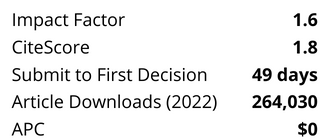Studies on the environmental impacts of the food industry are important because the wastewater produced by these industries contains large amounts of organic matter and nutrients. Nitrogenous compounds released into the environment stimulate the greenhouse effect and threaten biodiversity. Sequencing batch reactors (SBR) have received a considerable amount of attention in recent years and have been used in the treatment of dairy wastewater in bench scale studies. Dairy plants are operated in batch regime and offer a good opportunity for wastewater treatment via sequential batch processes. Accordingly, the present article describes the results obtained in the first 100 days of operation of a system composed of an anaerobic sequencing batch (ASBR) followed by an aerobic reactor operated under SBR mode, for the treatment of wastewater generated by the USP Pirassununga dairy plant. SBR was used as post-treatment of ASBR to remove residual organic matter and to promote the nitrification of the effluent of the ASBR. Within a 24-h cycle, the ASBR removed 91.1 ± 5.0% of organic matter (chemical oxygen demand (COD) total). The initial concentration of total COD was approximately 4.5 g/L, and the organic loading rate was equal to 4.5 kg/m³ day. The SBR was operated for 24 h at a dissolved oxygen concentration of 3 mg/L, and NH4+-N was effectively converted to NO3−-N. At the end of the cycle, the concentration of NO3−-N and NO2−-N was equal to 26.0 ± 20.7 mg/L and 4.9 ± 2.97 mg/L, respectively. The SBR removed 75.5 ± 22.4% of the total total Kjeldahl nitrogen (TKN-N) of which 50% was converted to nitrate and 9% was converted to nitrite. It is believed that 41% of TKN-N removed may have been assimilated by microorganisms or converted to gaseous nitrogen by the denitrification during the stage of sedimentation. Moreover, phosphorus was also efficiently removed from the effluent, and the concentration of total phosphorous at the end of the cycle was equal to 4.9 ± 0.8 mg/L. Regarding the employment of the effluents from reactors for agricultural reuse, it was not observed sodification risk of soil; however the high values of electrical conductivity indicated a high potential for soil salinization.
Skip Nav Destination
Article navigation
Research Article|
September 01 2012
Treatment of wastewater from dairy plants using Anaerobic Sequencing Batch Reactor (ASBR) following by Aerobic Sequencing Batch Reactor (SBR) aiming the removal of organic matter and nitrification
E. M. Matsumoto;
E. M. Matsumoto
1Laboratory of Environmental Biotechnology – Department of Food Engineering – School of Animal Science and Food Engineering – University of São Paulo (USP), Pirassununga, SP, Brazil
Search for other works by this author on:
M. S. Osako;
M. S. Osako
1Laboratory of Environmental Biotechnology – Department of Food Engineering – School of Animal Science and Food Engineering – University of São Paulo (USP), Pirassununga, SP, Brazil
Search for other works by this author on:
S. C. Pinho;
S. C. Pinho
1Laboratory of Environmental Biotechnology – Department of Food Engineering – School of Animal Science and Food Engineering – University of São Paulo (USP), Pirassununga, SP, Brazil
Search for other works by this author on:
G. Tommaso;
G. Tommaso
1Laboratory of Environmental Biotechnology – Department of Food Engineering – School of Animal Science and Food Engineering – University of São Paulo (USP), Pirassununga, SP, Brazil
Search for other works by this author on:
T. M. Gomes;
T. M. Gomes
1Laboratory of Environmental Biotechnology – Department of Food Engineering – School of Animal Science and Food Engineering – University of São Paulo (USP), Pirassununga, SP, Brazil
Search for other works by this author on:
R. Ribeiro
1Laboratory of Environmental Biotechnology – Department of Food Engineering – School of Animal Science and Food Engineering – University of São Paulo (USP), Pirassununga, SP, Brazil
E-mail: rogerribeiro@usp.br
Search for other works by this author on:
Water Practice and Technology (2012) 7 (3): wpt2012048.
Citation
E. M. Matsumoto, M. S. Osako, S. C. Pinho, G. Tommaso, T. M. Gomes, R. Ribeiro; Treatment of wastewater from dairy plants using Anaerobic Sequencing Batch Reactor (ASBR) following by Aerobic Sequencing Batch Reactor (SBR) aiming the removal of organic matter and nitrification. Water Practice and Technology 1 September 2012; 7 (3): wpt2012048. doi: https://doi.org/10.2166/wpt.2012.048
Download citation file:
Sign in
Don't already have an account? Register
Client Account
You could not be signed in. Please check your email address / username and password and try again.
Could not validate captcha. Please try again.
eBook
Pay-Per-View Access
$38.00




%20cropped.png?versionId=5954)